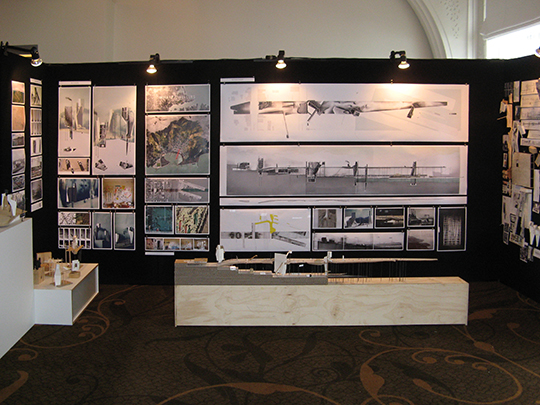Victoria architecture student tops design awards
Victoria University of Wellington fifth year student Tom Dobinson has won the top prize for architecture students at the New Zealand Institute of Architects’ Graphisoft Student Design Awards.

Victoria University of Wellington fifth year student Tom Dobinson has won the top prize for architecture students at the New Zealand Institute of Architects’ Graphisoft Student Design Awards.
Tom’s winning project focussed on his home town of Lyttelton. He explored the town’s character, taking inspiration from local artist Bill Hammond. The focus of his work was the design of a wharf that allows the public access to Lyttelton’s waterfront—an area that is currently restricted.
The Graphisoft Student Design Awards acknowledge design excellence in architecture. Four students from three of New Zealand’s schools of architecture—the University of Auckland, UNITEC and Victoria—presented their work to a panel of judges.
The judges complimented Tom’s clearly and legibly presented work. “[It] reveals a talent for analysis, skill in assembly, and a deep interest in the social and architectural condition of Lyttelton,” they said.
Tom’s prize includes a $5000 scholarship and a trip to Australia where he will meet with a range of architects and view their work. On his return, he will continue working on his thesis, supervised by Jan Smitheram and Simon Twose, lecturers at Victoria’s School of Architecture.
Benjamin Allnat, Hamish Beattie and Carinya Feaunatic were the other three finalists from Victoria.
Benjamin’s project focussed on a building on the Kapiti Coast that the Government could use in the event of an earthquake, if the Beehive was damaged.
Hamish’s entry was influenced by his experience of working for a United Nations agency in Africa. The project combined basic digital technology and sophisticated design skills to produce a waste recycling system.
Carinya’s project was the regeneration of a Samoan fishing village damaged in the 2009 tsunami, which the judges called “a sensitive amalgam of craft traditions and modern architecture”.
Judge Chairperson Pip Cheshire, President of the New Zealand Institute of Architects, says the students’ proposals were highly impressive in their content and presentation.
“The students are amazingly proficient in digital technology, and the quality of the illustrations submitted by the finalists was very high.
“At the same time, it was pleasing to see the students also produced beautiful hand drawings and physical models.”
